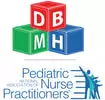DiGeorge Syndrome |
Page Contributors: Michelle Klosterman RN & Katherine Cielo RN
|
History
What would later be named “DiGeorge syndrome (DGS)” was first described in the literature over 40 years ago when Dr. Angelo DiGeorge first published a paper in the “British Defects: Original Aricle Series” in 1968. Historically, the variety of disorders associated with DGS were categorized separately however, once the signs and symptoms of DGS were discovered to be related to a deletion on chormosome 22, physicians changed the categorization of DGS to include the variety of signs and symptoms associated with the 22q11.2 deletion (Greenberg, 1993; health library, 2015; UpToDate Clinical features, 2014). Some children with DGS have multiple body systems affected (i.e. cleft palate, feeding difficulty, breathing, kidney or GI problems, hearing loss and possibly, skeletal changes such as short stature (National Library, 2015) however, most have the “classic triad” of signs and symptoms that include 1) congenital heart defect(s) (80% of patients with DGS), 2) under developed or absent thymus and 3) low blood calcium levels (hypocalcemia) (related to under-developed parathyroid) (occurs as a newborn in up to 60% of patients with DGS); (UpToDate Clinical features, 2014). The most common CHD among patients with DGS include: Interrupted Aortic arch, Truncus areteriosus, Tetrology of Fallot, ASD or VSD or vascular rings. If a newborn has any of these aformentioned heart defects, problems with hypocalcemia and/or a cleft palate providers should consider testing for DGS.
There are a plethora of names used that encompass what is also known as DiGeorge Syndrome. Those include (but are not limited to):
What would later be named “DiGeorge syndrome (DGS)” was first described in the literature over 40 years ago when Dr. Angelo DiGeorge first published a paper in the “British Defects: Original Aricle Series” in 1968. Historically, the variety of disorders associated with DGS were categorized separately however, once the signs and symptoms of DGS were discovered to be related to a deletion on chormosome 22, physicians changed the categorization of DGS to include the variety of signs and symptoms associated with the 22q11.2 deletion (Greenberg, 1993; health library, 2015; UpToDate Clinical features, 2014). Some children with DGS have multiple body systems affected (i.e. cleft palate, feeding difficulty, breathing, kidney or GI problems, hearing loss and possibly, skeletal changes such as short stature (National Library, 2015) however, most have the “classic triad” of signs and symptoms that include 1) congenital heart defect(s) (80% of patients with DGS), 2) under developed or absent thymus and 3) low blood calcium levels (hypocalcemia) (related to under-developed parathyroid) (occurs as a newborn in up to 60% of patients with DGS); (UpToDate Clinical features, 2014). The most common CHD among patients with DGS include: Interrupted Aortic arch, Truncus areteriosus, Tetrology of Fallot, ASD or VSD or vascular rings. If a newborn has any of these aformentioned heart defects, problems with hypocalcemia and/or a cleft palate providers should consider testing for DGS.
There are a plethora of names used that encompass what is also known as DiGeorge Syndrome. Those include (but are not limited to):
|
|
Overview
- UCSF Benioff Children’s Hospital San Francisco Reference: http://www.ucsfbenioffchildrens.org/conditions/velocardiofacial_syndrome/
- Kaiser Permanente Reference: http://mydoctor.kaiserpermanente.org/ncal/specialty/genetics/resources/conditions/22q11del.jsp
- Mayo Clinic Reference: http://www.mayoclinic.org/diseases-conditions/digeorge-syndrome/basics/definition/con-20031464
- American Heart Association Reference: http://www.heart.org/HEARTORG/Conditions/CongenitalHeartDefects/DiGeorge-Syndrome_UCM_309017_Article.jsp
Etiology
- Children’s Hospital of Philadelphia Reference
- The History of the 22q11.2 Deletion: http://www.cbil.upenn.edu/VCFS/22qandyou/history.html
- Mayo Clinic Reference: http://www.mayoclinic.org/diseases-conditions/digeorge-syndrome/basics/causes/con-20031464
Assessment & Screening
|
Clinical presentations vary significantly in type and severity, depending on what body systems are affected and how severe the defects are.
|
Growth & Development: Growth Charts for Boy’s and Girl’s with 22q11.2 Syndrome
Symptoms
Other
|
Treatment and Drugs:
- Seattle Children’s Hospital Reference
- Mayo Clinic Reference: http://www.mayoclinic.org/diseases-conditions/digeorge-syndrome/basics/treatment/con-20031464
|
Other disorders with similar features:
DiGeorge Syndrome Complication Notes:
|
Complications
|
Position Papers
Articles
- Management Guidelines: Bassett, A. S., McDonald-McGinn, D. M., Devriendt, K., Digilio, M. C., Goldenberg, P., Habel, A., … Vorstman, J., The International 22q11.2 Deletion Syndrome Consortium. (2011). Practical Guidelines for Managing Patients with 22q11.2 Deletion Syndrome. The Journal of Pediatrics, 159(2), 332–9.e1. doi:10.1016/j.jpeds.2011.02.039
Resources
- Genereview Entry
- Genetics Home Reference: 22q11.2 deletion syndrome
- Recent 22q11.2 Deletion Syndrome PubMed Articles (if accessible)
- Emory University School of Medicine: Congenital Heart Defects & 22q11.2 Microdeletion
|
General Resources:
|
|
References:
- National Library of Medicine (US). Genetics Home Reference [Internet]. Bethesda (MD): The Library; 2015 Jan 19.; 22q11.2 deletion-syndrome [reviewed 2013 July; cited 2015 Jan 22]; [about 6 screens].
- Greenberg, F. (1993). DiGeorge syndrome: an historical review of clinical and cytogenetic features. J Med Genet, 30(10), 803-806.
- UptoDate.com-DiGeorge syndrome: Clinical features and diagnosis, (2014). Accessed January 22, 2015.
- https://www.ucdmc.ucdavis.edu/mindinstitute/research/cabil/Publications/managing_patients_with22q11.2deletion_syndrome.pdf
- NIH Genetics Home Reference (2013). 22q11.2 deletion syndrome. Accessed January 22, 2015.
